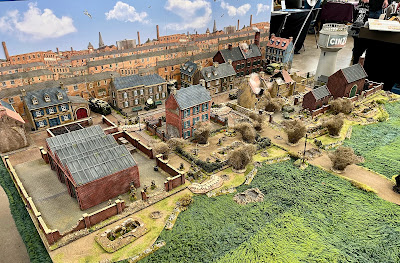This is Simon Elliot's book on the two campaigns Emperor Severus made in Scotland. His swansong before dying at York after the second campaign. Only one chapter in the book is devoted solely to the actual campaigns; the rest of the book sets the scene. In fairness, the sources and archaeology are scarce, and the campaigns must be seen in the broader context. There was, of course, not Scotland as such, but we are describing campaigns in the area covered by modern Scotland.
The sub-title referencing 'Hammer of the Scots' is justified based on the quote from Cassius Dio's campaign narrative. 'No: we are not going to leave a single one of them alive., down to the babies in their mothers' wombs - not even they must live. The whole people must be wiped out of existence, with none to shed a tear for them, leaving no trace.' Edward I thought similarly, and he also died making the effort!
For context, Severus ruled in the latter part of the Principate Empire just before the chaos of the crisis of the Third century. He came to power in AD 193; his Scottish campaigns were AD 209 and AD 210. He died in AD 211. Elliot gives us an overview of the Severan period, one of overall success, and Severus was one of the more effective rulers of the Empire. He implemented several military reforms, beginning the process of change from the border force to the later defence-in-depth model. The three key elements are described: the legions, auxiliaries and the fleets. All would participate in the Scottish campaigns. Fortifications were also important, both permanent and marching forts. The archaeology of these forts has helped trace the route Severus took in his invasion.
In the early third century, Roman Britain had a large Roman garrison of around 55,000, plus another 7,000 men in the Classis Britannica regional fleet. This is about 12% of the total manpower for only 4% of the Empire's land mass. Perhaps because of this, the tribes south of Hadrian's Wall were pretty settled, with growing urban and agricultural development. However, the northern tribes often raided over the border. In particular, the Maeatae just north of the border and the Caledonians above the Highland line. These were confederations of tribes, fighting in a more open style than other 'barbarian' tribes the Romans faced, and they retained the use of light chariots long after others had abandoned them.
Severus was a warrior emperor, and the limited evidence points to him wanting one last great military triumph before he died. A plea for assistance from the governor was, therefore, probably welcomed. He brought the Empire to Britain, with the Imperial court set up in York. He also had challenging sons who needed to be taken away from the fleshpots of Rome for campaign experience. He brought detachments from several legions with him to supplement the three already in Britain, as well as the Praetorian Guard and Guard cavalry (Equites singulares Augusti). A total force of around 50,000 men plus the fleet.
Severus advanced into Scotland along Dere Street in the spring of AD 209. The local tribes in the borders sued for peace, given the size of the force. The crossing point across the Forth is disputed, but Elliot goes for the route of the current Forth Railway bridge, which is some engineering achievement for what would have been a pontoon bridge. After crossing the Tay, Severus split his force into two. One column marched with him along the coast, with the fleet alongside. His son Caracalla led the other inland along the Highland line—a hammer and anvil strategy which worked well. There were no major battles, but the tribes did cause significant casualties through harassing attacks and ambushes. The experience was grim for both sides, and the weather seems to have been worse than usual. As I write this, the area is subjected to Storm Babet, flooding large parts of the route.
The Romans did not intend to occupy the region above the Tay, although a naval base may have been maintained. The following year, the Maeatae and Caledonians rebelled, and Severus sent his son north again with the genocide order. He appears to have carried that order out, as little is heard from either tribe for years after this campaign. The Scottish weather probably did for Severus, as he died the following year at York. His sons quickly made peace and returned to Rome to scrap over the Emperorship.
I have been playing the Strength and Honour rules recently in 2mm. I don't have chariots, but my Dacians were repurposed as Caledonians for a game in tricky terrain for the Romans.
The warband on the Caledonian left managed a tricky manoeuvre to turn through the woods into the flank of Praetorian Guard. They even rolled a six in the combat, but the Praetorian discipline held firm.
It was downhill after that for the Caledonians as the Romans ground their way northwards.
I never thought I would take to 2mm, but I am enjoying these rules.



















































